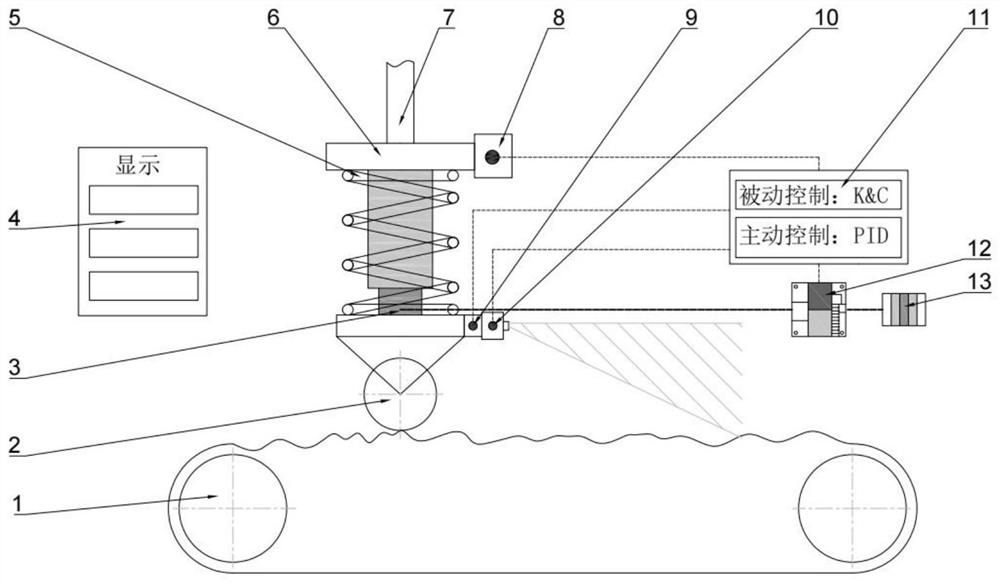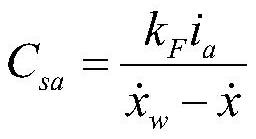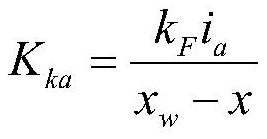An intelligent vehicle vertical motion test bench for vehicle dynamics teaching
A technology of vehicle dynamics and vertical movement, applied in the field of vehicle testing, can solve the problems of many teaching contents, no complete vehicle model, and lack of in-depth understanding of students
- Summary
- Abstract
- Description
- Claims
- Application Information
AI Technical Summary
Problems solved by technology
Method used
Image
Examples
Embodiment 1
[0052] Embodiment 1: basic test
[0053] In general suspension systems, the stiffness and damping coefficient are fixed after the suspension is installed. The basic test enables students to use the test bench to measure the characteristics of the suspension and have a basic understanding of the vertical motion of the suspension. The test steps are as follows:
[0054] 1) Check whether the test bench is normal, and record the basic parameters of the suspension system, such as body mass, suspension stiffness, damping coefficient, wheel mass (unsprung mass), and motor parameters.
[0055] 2) Install the road simulation belt on the pulley and power on the control system.
[0056] 3) Set the speed of the road simulation servo motor, and click the acquisition system to start signal acquisition. Continue to collect for 1 minute to obtain the vertical acceleration of the vehicle body, suspension turbulence, and wheel dynamic load data, and then set the motor speed to 0 to stop reco...
Embodiment 2
[0061] Embodiment 2: damping simulation test
[0062] The damping coefficient of the suspension system has a very important influence on the vertical dynamic response characteristics of the vehicle. In the teaching experiment, different damping coefficients can be simulated by the voice coil motor in this test bench, and the influence law of the damping coefficient on the suspension characteristics can be obtained more conveniently. The test process is as follows:
[0063] 1) Check whether the test bench is normal, and record the basic parameters of the suspension system, such as body mass, suspension stiffness, damping coefficient, wheel mass (unsprung mass), and motor parameters.
[0064] 2) Install the road simulation belt on the pulley and power on the control system.
[0065] 3) Set the damping simulation coefficient on the upper computer, and the control system will calculate the required motor current according to the formula (1), so as to control the output force of ...
Embodiment 3
[0071] Embodiment 3: active control experiment
[0072] The vehicle vertical motion intelligent test bench of the invention can not only realize the simulation of different damping and rigidity, but also realize the active suspension function. Students can design different control laws according to different control objectives. The optimization goal is to minimize the dynamic loads on the body and tires while keeping the suspension travel to a minimum. Taking the vertical displacement of the vehicle body as an example, the test specifically includes:
[0073] 1) Check whether the test bench is normal, and record the basic parameters of the suspension system, such as body mass, suspension stiffness, damping coefficient, wheel mass (unsprung mass), and motor parameters.
[0074] 2) Install the road simulation belt on the pulley and power on the control system.
[0075] 3) Record the initial vehicle body position, set the simulated suspension test bench to the active control m...
PUM
 Login to View More
Login to View More Abstract
Description
Claims
Application Information
 Login to View More
Login to View More - R&D Engineer
- R&D Manager
- IP Professional
- Industry Leading Data Capabilities
- Powerful AI technology
- Patent DNA Extraction
Browse by: Latest US Patents, China's latest patents, Technical Efficacy Thesaurus, Application Domain, Technology Topic, Popular Technical Reports.
© 2024 PatSnap. All rights reserved.Legal|Privacy policy|Modern Slavery Act Transparency Statement|Sitemap|About US| Contact US: help@patsnap.com










